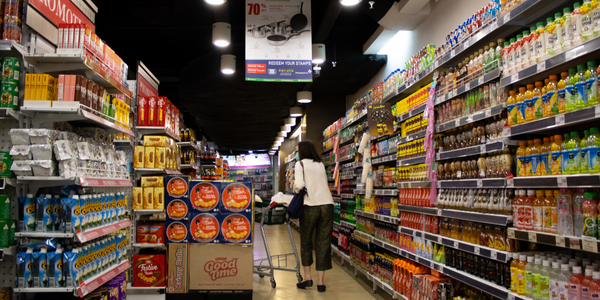Factory Operations Visibility & Intelligence

Visualizing factory operations data is a challenge for many manufacturers today. One of the IIoT initiatives some manufacturers are pursuing today is providing real-time visibility in factory operations and the health of machines. The goal is to improve manufacturing efficiency. The challenge is in combining and correlating diverse data sources that greatly vary in nature, origin, and life cycle. Factory Operations Visibility and Intelligence (FOVI) is designed to collect sensor data generated on the factory floor, production-equipment logs, production plans and statistics, operator information, and to integrate all this and other related information in the cloud. In this way, it can be used to bring visibility to production facilities, analyze and predict outcomes, and support better decisions for improvements.
- Heavy Vehicle
- Automotive
- Discrete Manufacturing
The industrial control and factory automation market are expected to reach USD 269.5 billion by 2024 from USD 160.0 billion in 2018, at a CAGR of 9.08%.
Source: markets and markets
Manufacturing Companies: Manufacturing companies invest in factory operations visibility and intelligence to improve productivity, reduce downtime, and enhance product quality. They deploy sensor networks, data analytics software, and digital twins to monitor equipment performance, detect anomalies, and optimize production workflows, leading to cost savings and operational efficiency gains.
Supply Chain Managers: Supply chain managers leverage factory operations visibility and intelligence to track inventory levels, monitor order fulfillment, and optimize logistics operations. They integrate manufacturing data with supply chain management systems to improve demand forecasting, inventory planning, and delivery scheduling, ensuring timely delivery of goods to customers and minimizing supply chain disruptions.
Manufacturing Engineers and Production Managers: Manufacturing engineers and production managers see factory operations visibility and intelligence as essential tools for optimizing production processes, improving equipment utilization, and meeting production targets. They rely on real-time data insights and predictive analytics to identify bottlenecks, prioritize maintenance tasks, and optimize production schedules, leading to higher throughput and reduced costs.
Maintenance Technicians: Maintenance technicians value factory operations visibility and intelligence for predictive maintenance, equipment condition monitoring, and fault detection. They use sensor data, predictive analytics algorithms, and augmented reality (AR) tools to diagnose equipment failures, schedule proactive maintenance activities, and minimize unplanned downtime, ensuring optimal equipment performance and reliability.
Sensor Technology: Factory operations visibility and intelligence systems leverage sensor technology, including IoT sensors, RFID tags, and machine vision cameras, to collect real-time data from manufacturing equipment and facilities. These sensors provide visibility into equipment status, production metrics, and environmental conditions, enabling proactive decision-making and process optimization.
Data Analytics and AI/ML: Factory operations visibility and intelligence systems use advanced data analytics techniques, including machine learning (ML) and artificial intelligence (AI), to analyze large volumes of sensor data, identify patterns, and predict equipment failures or production anomalies. These analytics capabilities enable predictive maintenance, anomaly detection, and prescriptive insights to improve manufacturing efficiency and reduce downtime.
Digital Twins and Simulation: Factory operations visibility and intelligence systems utilize digital twins and simulation models to create virtual representations of manufacturing processes, equipment, and facilities. These digital twins enable "what-if" scenario analysis, predictive modeling, and optimization of production workflows, allowing stakeholders to test and validate operational improvements before implementation in the physical environment.
Real-Time Sensor Data: Factory operations visibility and intelligence systems collect real-time data from sensors installed on manufacturing equipment, production lines, and inventory storage areas. This sensor data includes temperature, pressure, vibration, and other parameters relevant to equipment health and process control, enabling real-time monitoring and control of factory operations.
Historical Production Data: Factory operations visibility and intelligence systems store and analyze historical production data to identify trends, patterns, and performance metrics over time. This historical data provides insights into production efficiency, quality issues, and root causes of downtime, allowing stakeholders to make data-driven decisions and continuous process improvements.
Hardware Installation: Deployment includes the installation of sensors, data acquisition systems, and network infrastructure throughout the manufacturing plant to collect and transmit data from production equipment and facilities. Hardware installation may require collaboration with equipment vendors, electrical contractors, and IT specialists to ensure compatibility and reliability.
Software Integration: Deployment involves integrating factory operations visibility and intelligence software with existing manufacturing execution systems (MES), enterprise resource planning (ERP) systems, and other operational technology (OT) systems. Software integration enables seamless data exchange, interoperability, and automation of manufacturing processes, improving overall operational efficiency.
Case Studies.





